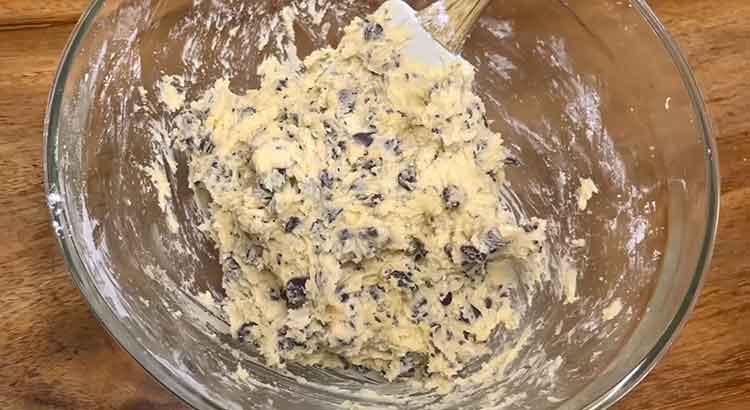Baking cookies is a delightful way to satisfy your sweet tooth and create delicious treats for yourself and others. But sometimes, despite your best efforts, you end up with crumbly cookie dough that leaves you feeling disappointed.
One of the most common reasons why your cookie dough is crumbly is using too much sugar. Sugar absorbs moisture from the dough, resulting in a dry texture that crumbles easily when baked. Adjusting the amount of sugar in your recipe can help maintain the right balance and ensure your cookies are soft and delicious.
Don’t worry, though! In this article, we’ll explore seven common reasons why your cookie dough may turn out crumbly, and provide simple solutions to help you achieve that perfect, soft texture you’re craving.
Insufficient Fat
Fat plays a crucial role in creating tender and moist cookies. When there isn’t enough fat in your dough, it can result in a crumbly texture. Fat coats the flour particles, preventing excessive gluten formation, which leads to a softer texture. If your cookie dough is crumbly, it could be due to insufficient fat.
One solution is to check your recipe and ensure you’re using the correct amount of fat, such as butter or oil. Additionally, be mindful of any substitutions you’ve made that might affect the fat content. Adjusting the fat in your recipe can help improve the texture of your cookies.
Using Cold Ingredients
The temperature of your ingredients can impact the outcome of your cookie dough. Using cold ingredients, especially cold fats like butter, can result in a crumbly dough. When the fat is cold, it doesn’t incorporate well with the other ingredients, leading to a dry and brittle texture.
To avoid this issue, make sure your ingredients are at room temperature before mixing them together. Take the butter out of the fridge in advance and let it soften. This will help the fat blend smoothly with the other ingredients and create a cohesive dough.
Wrong Flour Type
Using the wrong type of flour can affect the texture of your cookie dough. Different types of flour have varying protein contents, which directly influence gluten development. If you use a high-protein flour like bread flour instead of all-purpose flour, your cookies may turn out crumbly and dense.
Make sure to use the flour specified in your recipe. All-purpose flour is a safe bet for most cookie recipes, as it strikes a balance between protein content and texture. Using the correct flour type will help your cookies achieve the desired softness and structure.
Too Much Flour
Adding too much flour to your cookie dough is a common mistake that can lead to crumbly results. When you measure your flour incorrectly or pack it tightly into the measuring cup, you end up with more flour than the recipe intends. This excess flour absorbs the moisture in the dough, making it dry and crumbly.
To prevent this, use the proper method of measuring flour. Spoon the flour into the measuring cup and level it off with a straight edge. Avoid compacting the flour or tapping the measuring cup, as these actions can lead to an inaccurate measurement.
Insufficient Binding Ingredients
Cookie dough requires binding ingredients to hold everything together. If you’re missing or using too little of these binding ingredients, your dough may become crumbly. Common binding ingredients in cookie recipes include eggs and liquids like milk or water.
Ensure that you’re using the correct amount of eggs and liquids as specified in the recipe. If a recipe calls for one egg, make sure you don’t accidentally leave it out or reduce it. These binding ingredients pro
Adding Too Much Sugar
While sugar adds sweetness to cookies, using too much can result in a crumbly texture. Sugar absorbs moisture from the dough, leaving less liquid available to bind the ingredients together. This can lead to a dry and brittle cookie dough.
To avoid this, follow the recipe’s recommended sugar measurements. If you prefer less sweetness, you can reduce the sugar slightly, but be cautious not to remove too much, as sugar also contributes to the texture and browning of the cookies.
Overworking the Dough
Overworking or excessive handling of the cookie dough can also cause it to become crumbly. The more you handle the dough, the more you develop gluten, which can make the cookies tough and dry.
To prevent this, mix the dough until the ingredients are just combined. Avoid overmixing or kneading the dough excessively. Once the dough comes together and all the ingredients are evenly distributed, stop mixing to maintain a tender texture in your cookies.
Remember, simplicity is key when it comes to handling cookie dough. Treat it gently and avoid unnecessary kneading or excessive manipulation.
Final Thoughts
Baking can be a delightful and rewarding experience, especially when it comes to making cookies. While crumbly cookie dough can be a frustrating setback, don’t let it discourage you. With a little knowledge and a few adjustments, you can overcome this challenge and achieve the perfect texture in your cookies.
Remember to pay attention to the fat content, ensure your ingredients are at the right temperature, and use the correct type of flour. Measure your ingredients accurately, including the sugar and binding agents, and avoid overworking the dough. These simple steps can make a significant difference in the final outcome of your cookies.
So, don’t give up! Embrace the joy of baking, experiment with different recipes, and learn from your experiences. With practice and a sprinkle of patience, you’ll soon be baking batches of soft, chewy cookies that will have everyone asking for more. Enjoy the process, share your delicious creations, and savor the sweet rewards. Happy baking!

